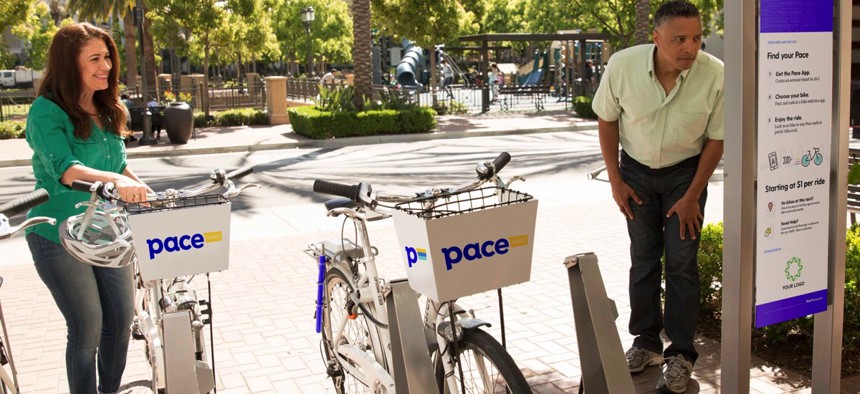Albuquerque Embraces Shift to Dockless Bike-Share System to Boost Local Mobility


Connecting state and local government leaders
Predictability is proving a priority for bicycle riders among the 98 cities adopting Zagster’s new Pace offering.
Just as Albuquerque is in the process of rolling out its new bus rapid transit line, New Mexico’s largest city is pressing forward elsewhere on the urban mobility front. In April, the city plans to launch a flexible, dockless bike-sharing system through Pace, a new service from Zagster, which has had a pilot program using fixed docking stations mainly in the downtown area since 2015.
As part of the shift, Albuquerque will add six new bike racks to its existing 15 Zagster stations and ramp its fleet up to 250 bicycles from 75 currently. Federal funding will allow the city to add another 250 bicycles in the fall, or else next year, and then another 250 a year later for a total of 750 across 50 racks.
“It really opens up where people can go by adding bike racks to bus and train stops, also activity centers and dense commercial corridors,” Valerie Hermanson, Mid-Region Council of Governments active transportation planner, told Route Fifty by phone. “It’s an amazing collaborative effort, and it’s going to be really revolutionary for our community because our community is very auto-oriented.”
Rio Metro Regional Transit District agreed to take on the program and usher it out of its pilot phase, in part, because—unlike traditional dockless bike sharing—the flexible model gives riders the ability to lock bikes, not only at Pace and Zagster racks, but private racks and anywhere else the host city legally permits.
Two-point security makes that possible, as a click of a button using the Pace mobile app frees the Bluetooth ring lock employed. When locked, the bike’s back wheel remains immobilized as with traditional dockless bike shares.
Pace further allows riders to place bikes on hold during mid-rental stops like, say, the coffee shop, so they know it’s still there waiting when they need to head back to the office.
Such features may seem like no-brainers, but being able to end a rental anywhere in a city and lowering costs to match bus rates by charging $1 every half-hour offers predictability that proved tremendously attractive when tested in Rochester, New York between July and October.
“We think that’s the right recipe for other cities considering bike shares moving forward,” said Tim Ericson, cofounder and CEO of Zagster, in a phone interview.
Ridership increased 800 percent in Pace’s first 90 days in Rochester—a launch city along with Tallahassee, Florida; Knoxville, Tennessee; and Huntsville, Alabama—and so did revenue.
Zagster has set up more than 200 bike shares in 35 state, all profitable, and its 98 city customers are converting to Pace with expectations that New York City, which uses Citi Bike, may switch to a dockless model in the next few years.
Another part of Pace’s appeal is its prioritization of the equitable placement of bike racks in underserved areas to not only maximize ridership but boost access to transit, a goal of Albuquerque's. The city is considering placing racks at every BRT stop, as well as other walkable, safe, well-lit locations.
An Albuquerque study found thousands of weekday trips made by single-occupancy vehicles in its downtown area fell under one mile in length. The city’s pilot of Zagster saw more than 2,000 riders take more than 9,000 trips.
“I think that we’re going to see those numbers uptick a lot,” Hermanson said.
Dave Nyczepir is a News Editor at Government Executive’s Route Fifty and is based in Washington, D.C.

NEXT STORY: Dipsticking aquifers from space





